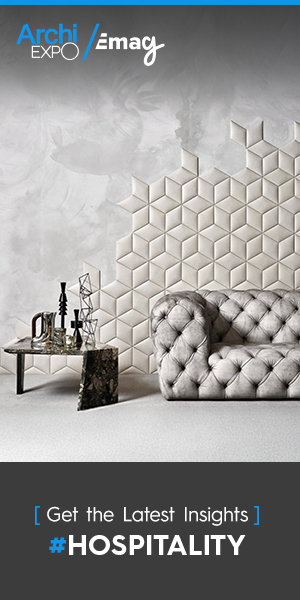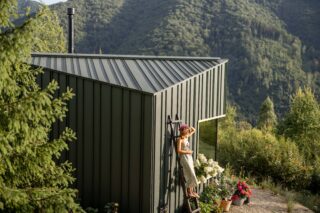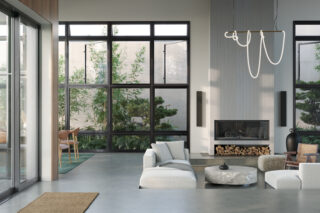Grace Gathright, Senior Communications Director at UpSpring, provides insights into NeoCon 2025 through award-winning product picks and more.
NeoCon 2025 welcomed over 400 exhibitors and 50,000 attendees to Chicago’s Merchandise Mart, reaffirming its status as a hub for breakthrough workplace design. Across the city, people flocked to the Mart and Design Days at Fulton Market, which drew crowds with showrooms and installations offering a fresh look at the future of interiors.
This year, the spotlight shifted from private offices to the in-between spaces—lounges, touchdown zones, meeting tables, and soft seating that now support collaboration, focus, and well-being in today’s hybrid workplace. What stood out most? A collective rethink of what these ancillary spaces can do—and how much more they can offer when they’re designed with intention.
Other themes and highlights: flexibility was everywhere, as were products that allowed for quick and easy transitions between spaces. Designers embraced comfort as a strategy, from biophilic textures to tactile finishes. Neurodiversity was no longer a niche conversation, but the foundation of inclusive, sensory-friendly design. Sustainability showed up not as a buzzword, but as a built-in performance metric. At NeoCon 2025, workplace designers proved that design doesn’t need to be loud in order to be effective.
As offices shrink and hybrid work reshapes how and where we focus, NeoCon 2025 made one thing clear: these in-between spaces have become essential infrastructure for productivity, comfort, and connection.
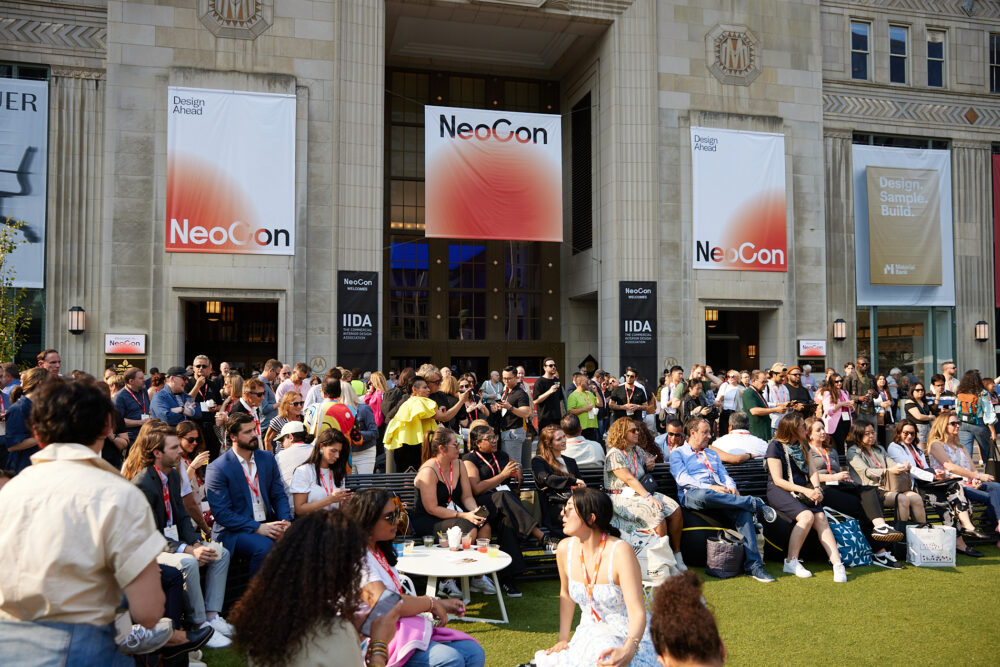
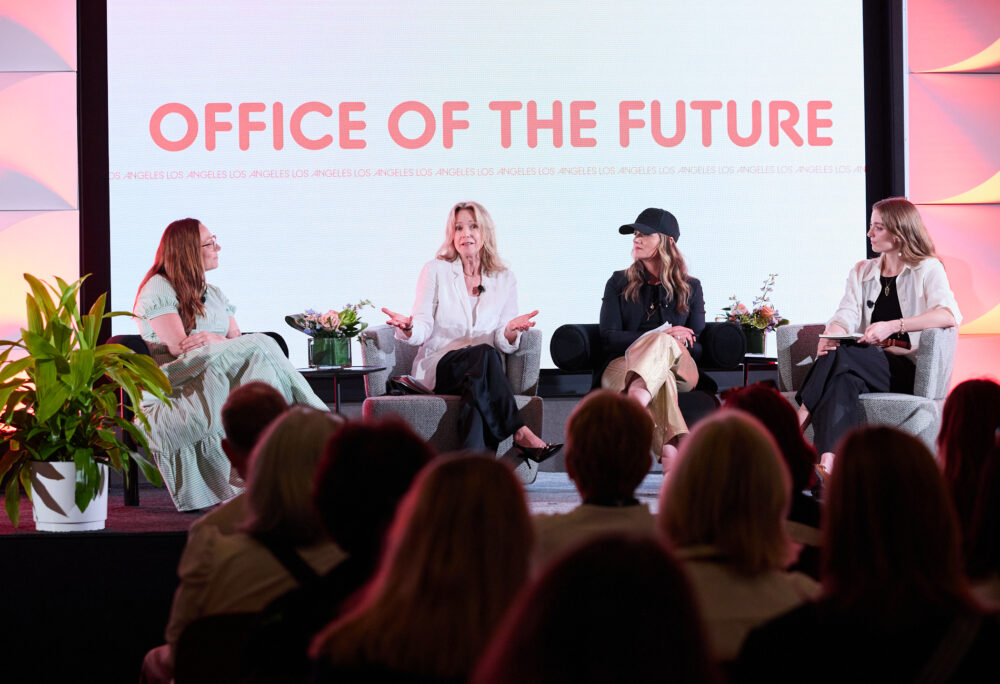
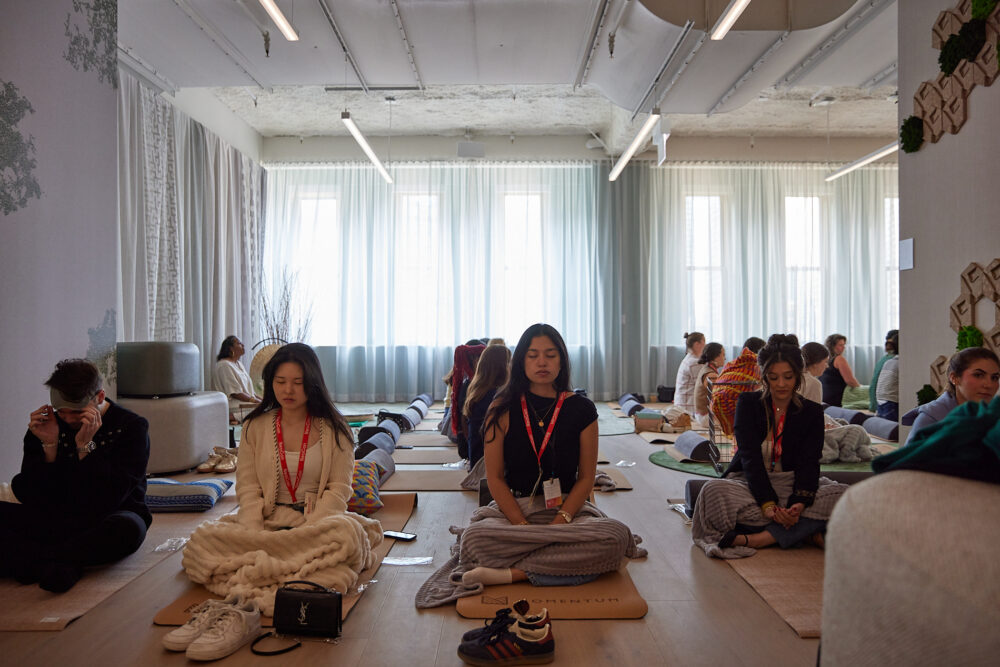


Award-Winning Picks: Product Designers Reclaim Office Customization
Customization, simplicity, and adaptability stood out as key characteristics of the most talked-about products at the show. One celebrated launch came from modus ID, whose Una Collection for Nienkämper took home four Best of NeoCon awards, including the Gold award for height-adjustable tables.
“I think Una appeals to people as an innovative solution that was hiding in plain sight,” said Nick Gillissie, founder and partner at modus ID. “The Nienkämper team saw furniture designers slapping their heads when they saw it as if to say, ‘why didn’t I think of that?’ It’s the way that flex knit fabric moves when the tables are being raised and lowered that surprises and delights those who see it. I saw people’s eyes grow, smiles cross their faces, and some even giggled.”
Modus ID—also behind the award-winning Spaces collection for Global Furniture Group—champions design that balances this playfulness and practicality.

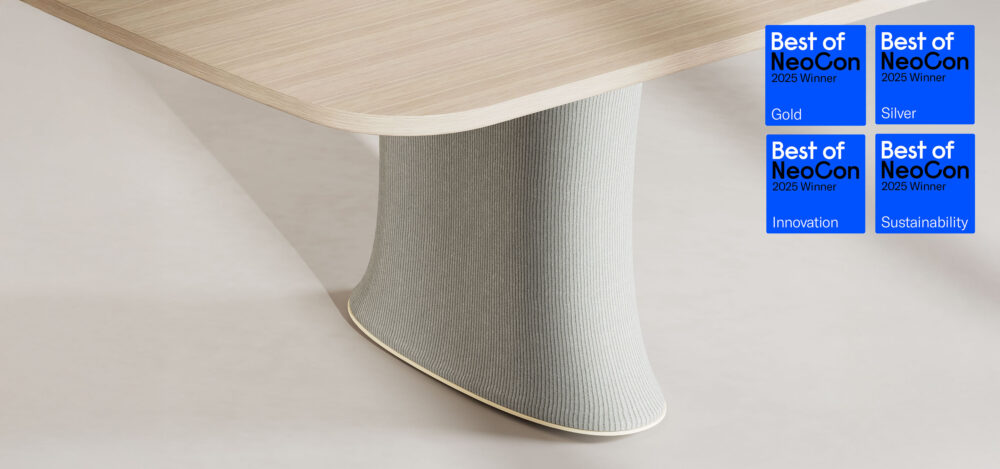
On the other side of Chicago, Alyssa Coletti, Principal at Nonfiction Creative and Interior Design’s 2025 HiP Award Winner for Best Product Designer, was showing off her Figure Table for Teknion at Fulton Market. Previewed at Design Days and winner of the HiP Award in the ‘Workplace: Conference/Work Table’ category, it blends clean geometry with deep personalization.
“A hallmark of my design philosophy is to design products that transcend trends by offering customization options in a timeless form,” Coletti said. “Combining the forms with the ability to tailor CMF options opens the door to creating personalized expressions of the product. Those expressions can be trend-oriented or characterize any appropriate style.”
The Figure Table exemplifies this balance—one product, many possibilities—designed to evolve with the people that use it.
These designs were two of many that exemplified a shift toward workplace design that’s both high-performing and highly personal.
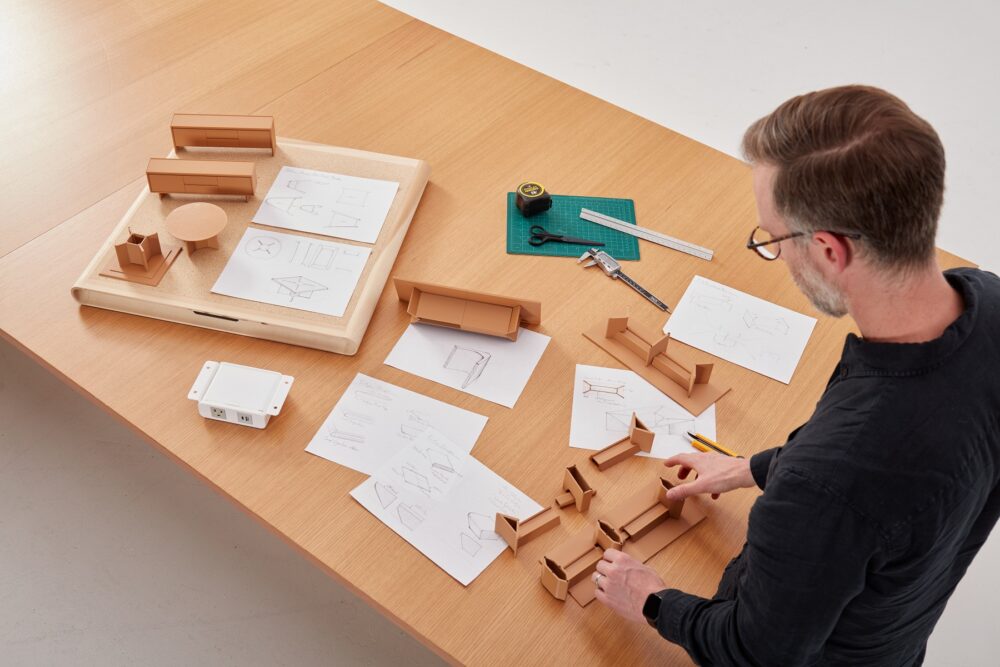
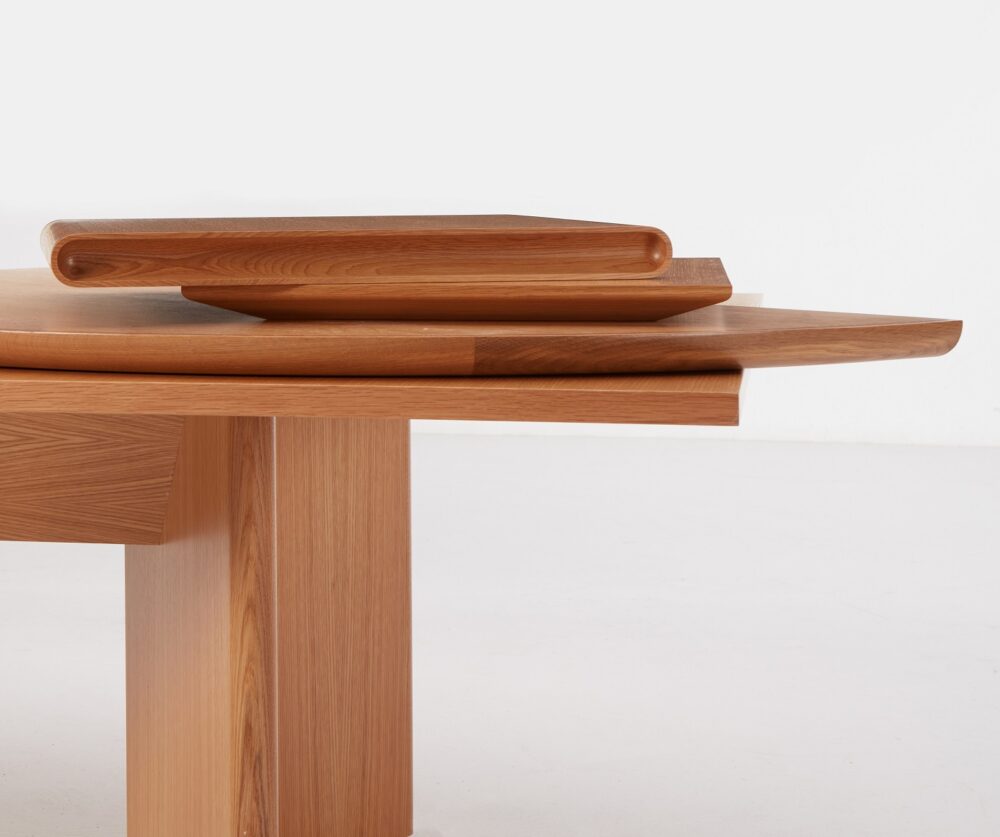
Flexibility For Effortless Transitional Spaces
One of the most pronounced themes throughout the Mart and neighboring showrooms was intuitive flexibility. Design teams aren’t interested in adding complex technology—they’re subtracting it. From integrated power and user-friendly tech to reconfigurable guest seating, exhibitors delivered solutions that meet users where they are.
This year’s party at Allseating—a whimsically reimagined Alice in Wonderland meets seating theme—highlighted the Attune Guest chair. Lightweight and mobile, the chair is as ergonomically sound as it is approachable. Designed by Aaron Duke and Paul Mazzotta of Studio Black Box, Attune Guest mirrors the posture-friendly curves of the original task chair model, offering a flexing upper back and customizable finishes.
Most of the favored seating solutions at this year’s show were built to blend anywhere—quiet rooms, huddle spaces, or lounge zones. More than style, products like these invite universal access without added instruction. Just sit, and you’ll be comfortable for hours.
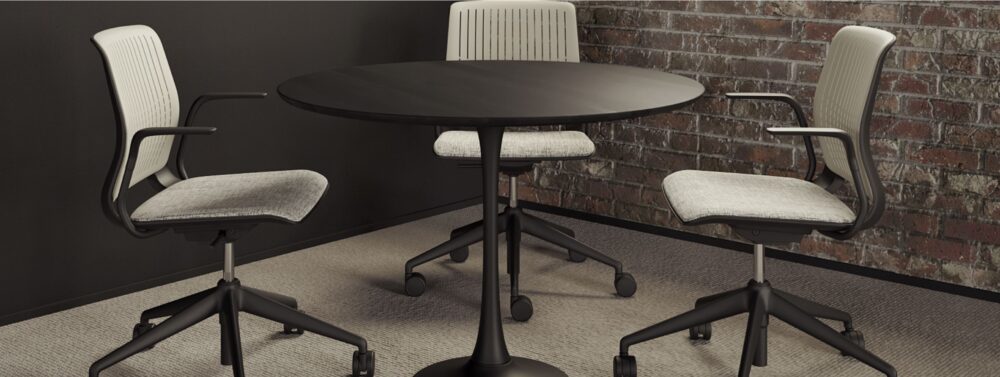
Comfort as Strategy: Biophilia, Lighting Evolve to Enhance Productivity
Biophilic design at NeoCon 2025 wasn’t just to draw eyes and booth foot traffic—it was about enhancing performance. Momentum Textiles and Wallcoverings’ nature-forward showroom entrance made this immediately clear: natural materials and tactile fabrics now serve sensory benefits beyond the aesthetic.
Brands are now using organic motifs to improve well-being and emotional regulation in new ways. Whether fostering recovery between tasks or keeping attention fresh in high-traffic areas, greenery and natural forms are now positioned for strategic workplace wayfinding. Research continues to support that exposure to biophilic elements improves focus, reduces stress, and enhances creative thinking.
Another theme? Designers are focusing on lighting and its role in circadian rhythm support, experimenting with systems that mimic natural daylight shifts. From cooler tones in the morning to warmer hues later in the day, NeoCon’s 2025 showrooms showcased spaces that felt more aligned with human biological needs. Often underutilized in contract design, this shift will make a major impact on wellness in the workplace.

Designing for Neurodiversity: Flexibility for Every Mind
“I noticed a shift from neurodiversity being a thing that needs to be designed for as an exception,” said Alyssa of Nonfiction Creative, “to an understanding that everyone is different.”
This ethos permeated NeoCon 2025, where neuro-inclusive design moved beyond mandatory accessibility checklists to support varied ways of thinking and working.
Innovations in lighting and acoustics are playing a pivotal role in this transformation. Many exhibitors introduced solutions designed to balance stimulation and calm, especially in ancillary zones where overstimulation can quickly derail productivity. Quiet pods, color-tuned lighting, and tactile surfaces offered plenty of choices for those seeking solace or stimulation.
Nick Gillissie of modus ID shared his personal perspective:
“I myself was diagnosed with dyslexia and ADHD when I was young, which at the time was not as commonly caught… It took a lot of time, effort, and support to get there, but finding my aptitude relating to spatial cognition was a key component. K-12 environments, teaching practices, and education policies conceived of in a way to help our little ones who have a hard time paying attention will have the most impact. Some of the products our industry produces can have a part to play in that.”
From early education to enterprise, the goal is no longer to design for the average. It’s to create environments that acknowledge that every person works, learns, and focuses differently.
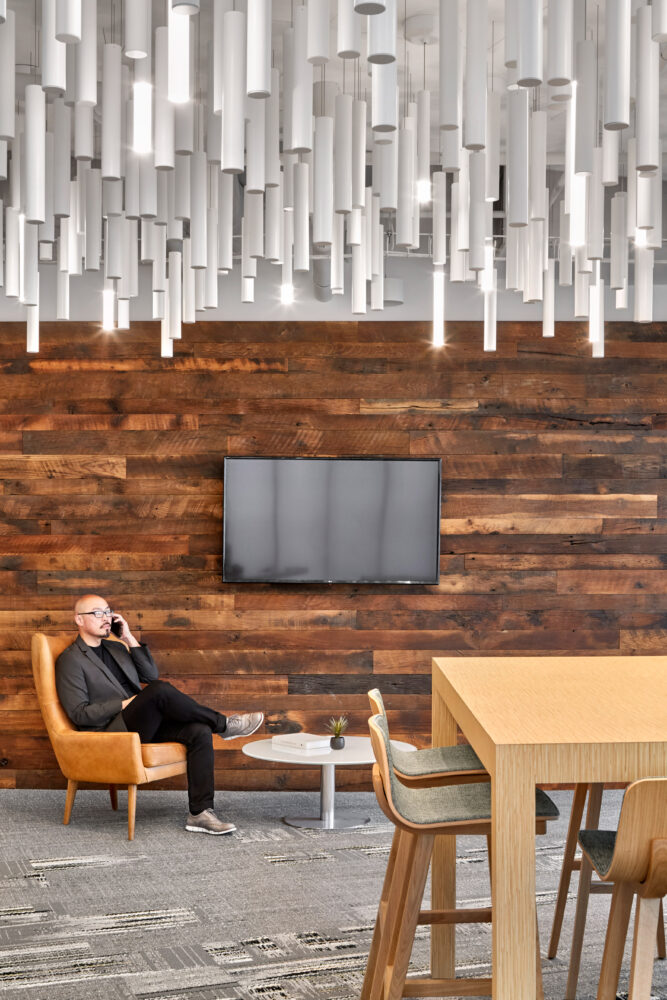
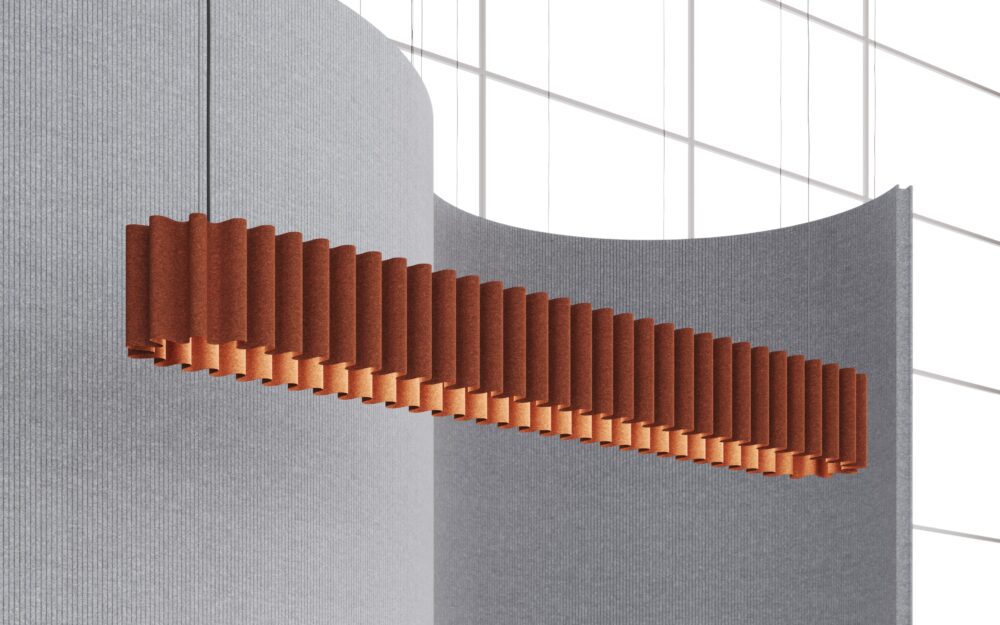
Materials with Purpose: Sustainability Seamlessly Integrated
At this year’s show, sustainability wasn’t a loud headline; it was an unspoken expectation. The baseline has shifted: true performance now means responsibility. Circular design, durability, and low-impact materials are no longer optional extras, but standard practice.
Take the Cumulus 3D Cloud by Carnegie, winner of a 2025 MetropolisLikes award. This soft, billowing installation not only absorbs sound with an impressive Array-NRC of 0.65, but is also wrapped in Carnegie’s Cradle to Cradle Certified Xorel®—a textile made from sugarcane. It’s functional art that soothes and performs.
Alyssa Coletti of Nonfiction Creative highlighted this growing trend toward “highly organic forms in upholstery,” made possible by advances in 3D textile technologies.
“These innovations reduce waste and open up entirely new languages for form.”
At NeoCon, sustainable performance is no longer a compromise—it’s a competitive advantage and a challenge to designers to seek out responsible choices.

The Future of High-Functioning Spaces is Human-Centered
NeoCon 2025 marks a major redefinition of ancillary space—from soft, social moments to strategically programmed environments that restore, refocus, and reengage. This year’s designs were less about flash and more about thoughtful, human-centric solutions: effortless flexibility, comfort as a strategic tool, expanded inclusivity embracing neurodiversity, and sustainability as a built-in performance standard. The products shown highlighted the power of customization and simplicity in creating adaptable, welcoming spaces.
The annual show and all of its debut collections made it clear: the future of commercial design is about more than productivity. In today’s evolving hybrid workplace, where teams shift between settings and needs change by the hour, flexibility isn’t a feature—it’s a foundation. The next generation of high-performing spaces must adapt seamlessly, supporting focus, collaboration, and well-being wherever and however work happens.

Grace Gathright is a Senior Communications Director at UpSpring, a holistic PR, marketing, and creative agency. Based in New York, Grace develops and executes strategic campaigns for a diverse roster of consumer and trade product companies across the architecture and design industry.

